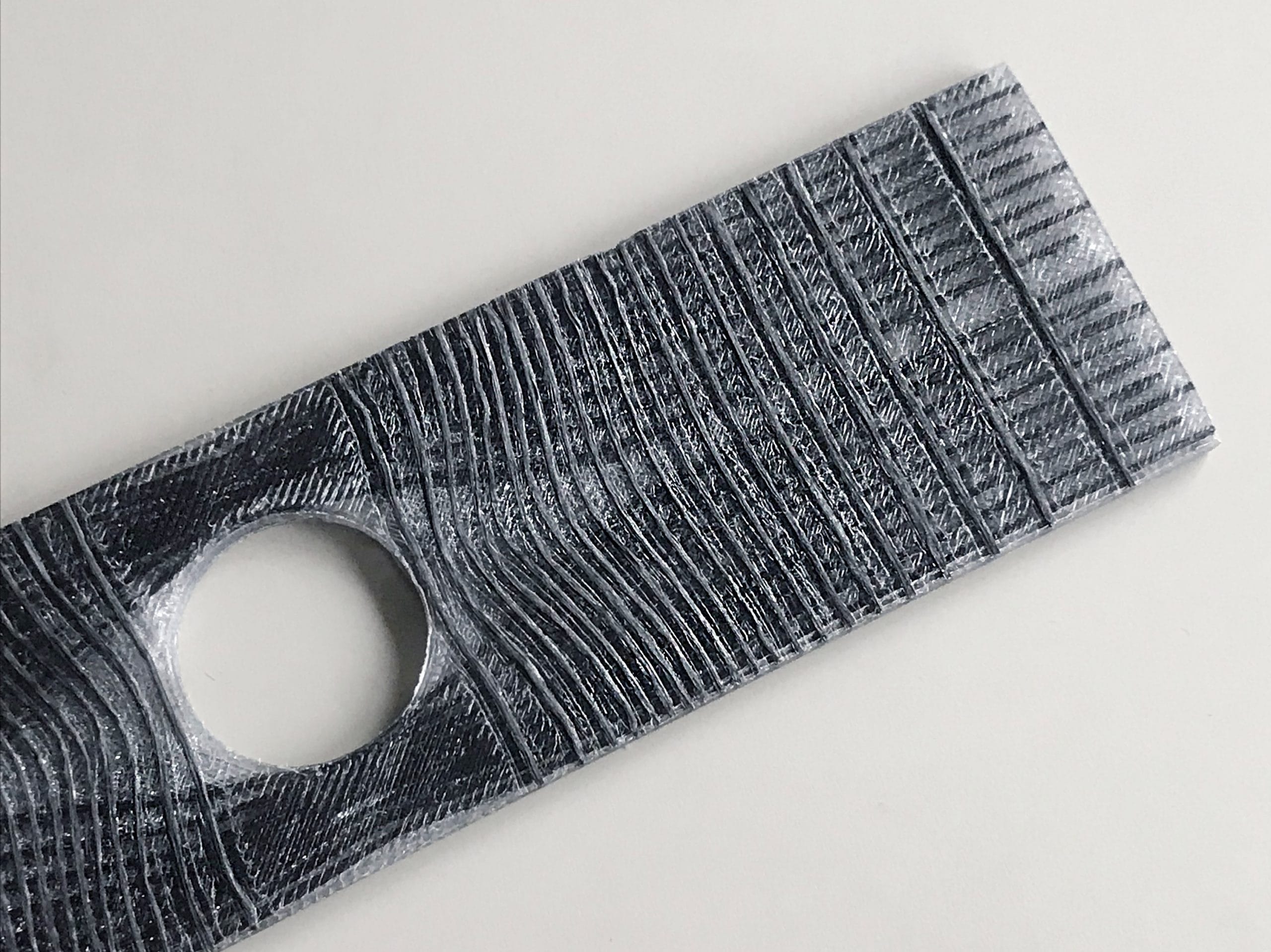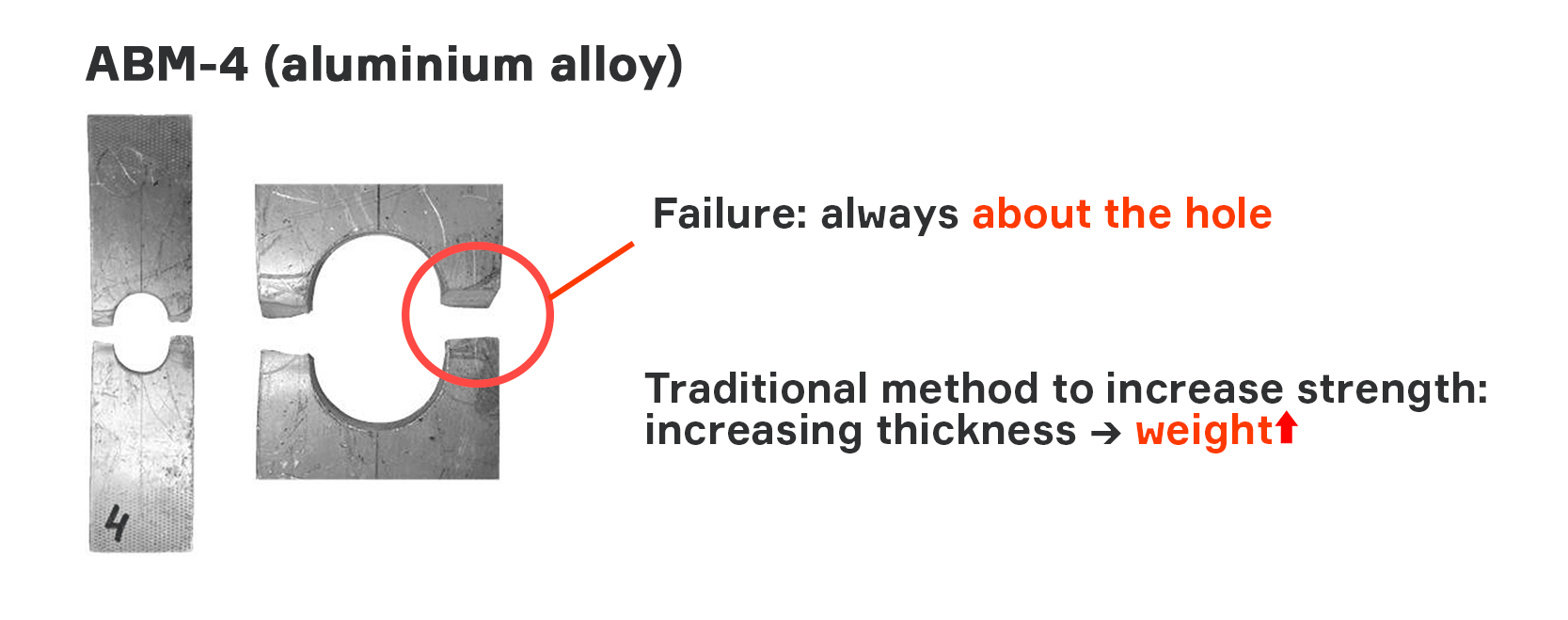Holes are well known stress concentrators that significantly reduce the strength of structural elements. With fiber steering, a specific layup of the reinforcing fiber eliminates stress concentrations and distributes the load evenly across the entire part.
One of the most significant advantages of CFC 3D printing is the ability to control the trajectories of reinforcement threads. It enables the production of optimal composites for a given load and boundary conditions while reducing weight, which is impossible with traditional composite manufacturing technologies such as composite layup or winding.

In the sample above curvilinear trajectories of fiber match the load distribution. This type of reinforcement does not increase the mass: it is possible due to fiber steering. Customized trajectories and internal structure allow to optimize the reinforcement patterns for cases with unconventional stress application and provide optimally performing light weight parts.

Fiber steering has been the subject of intense study. The article “Manufacturing and Testing of A Fibre Steered Panel with A Large Cut-out, Composite Structures (2017)” by A. Khani, M.M. Abdalla, Z. Gürdal et al. describes an experiment that showed the effectiveness of fiber steering:
"The results indicate that the variable stiffness laminate is capable of sustaining significantly larger loads, before failure, than the constant stiffness and quasi-isotropic laminates of equal weight."
